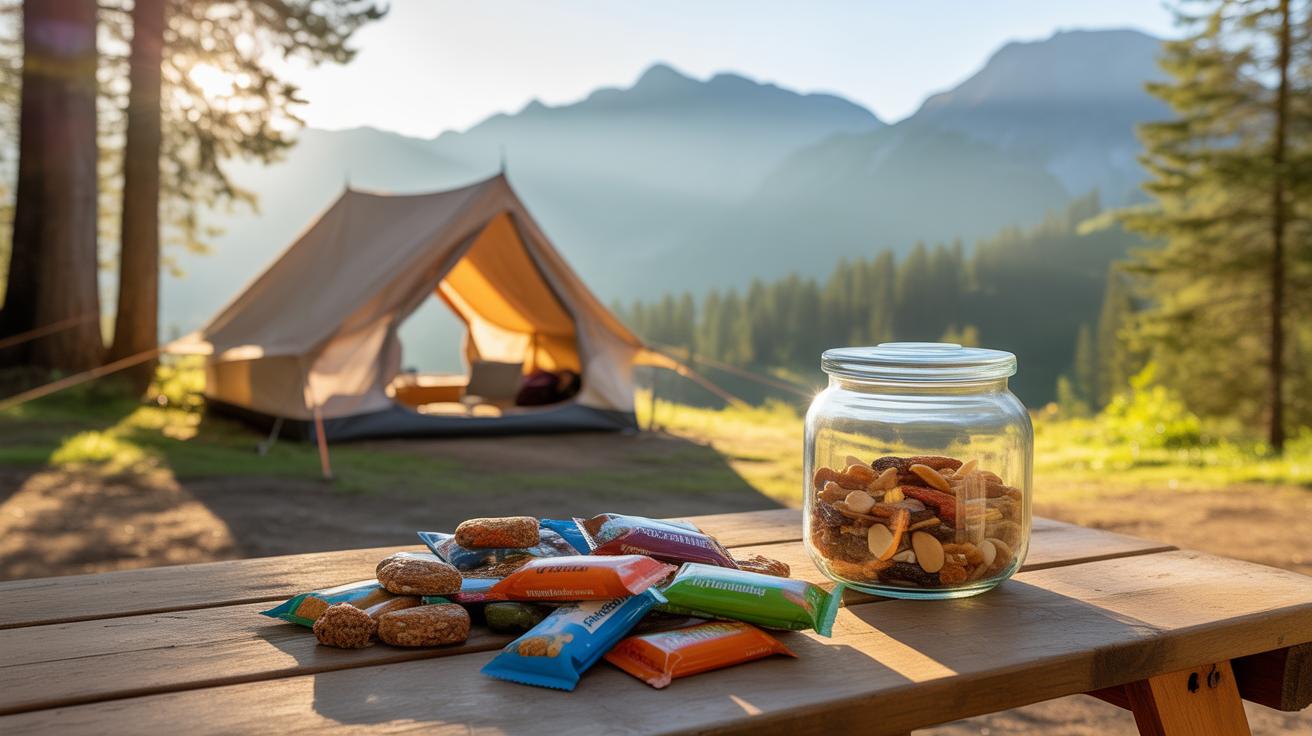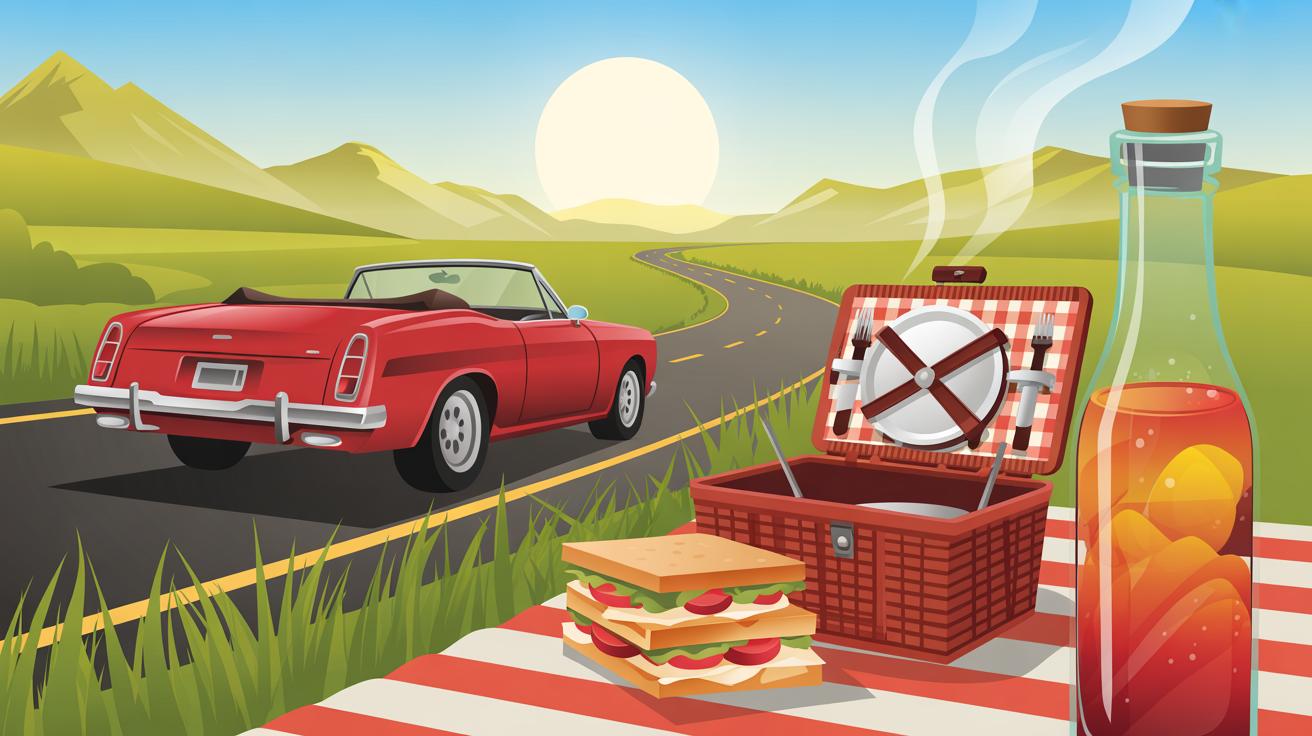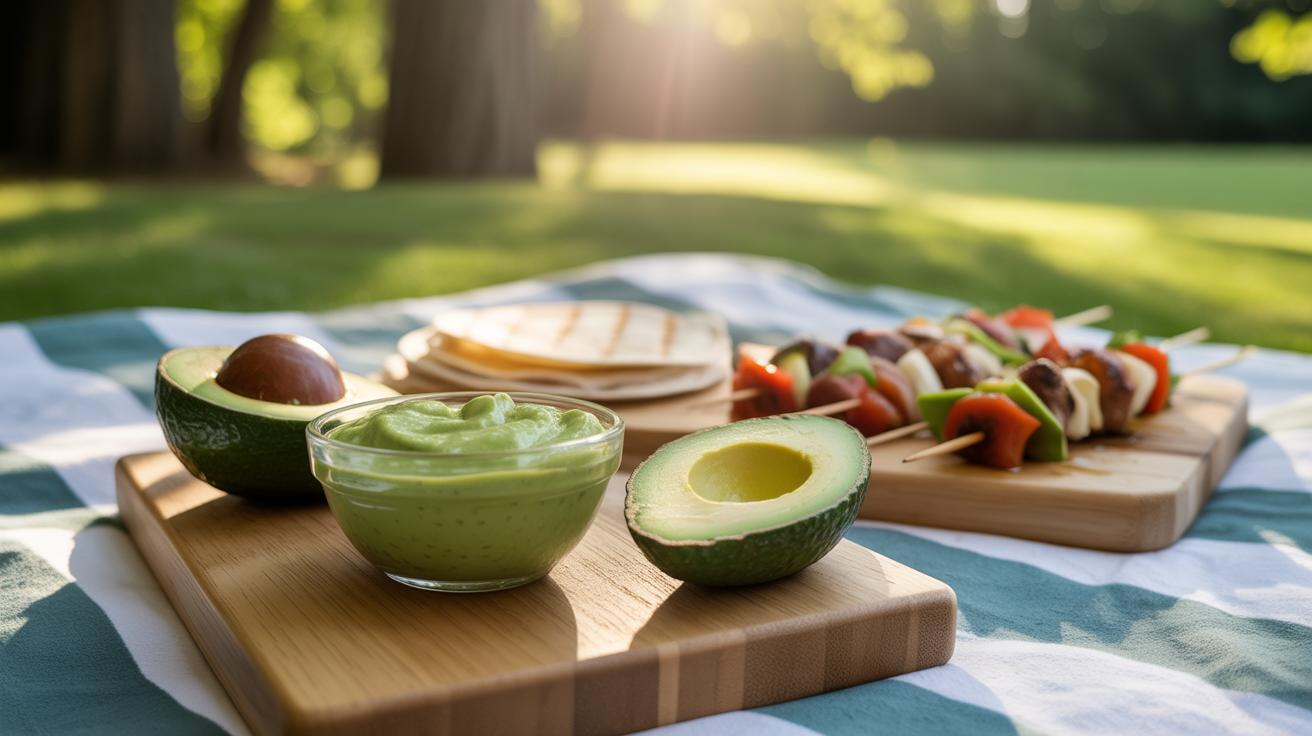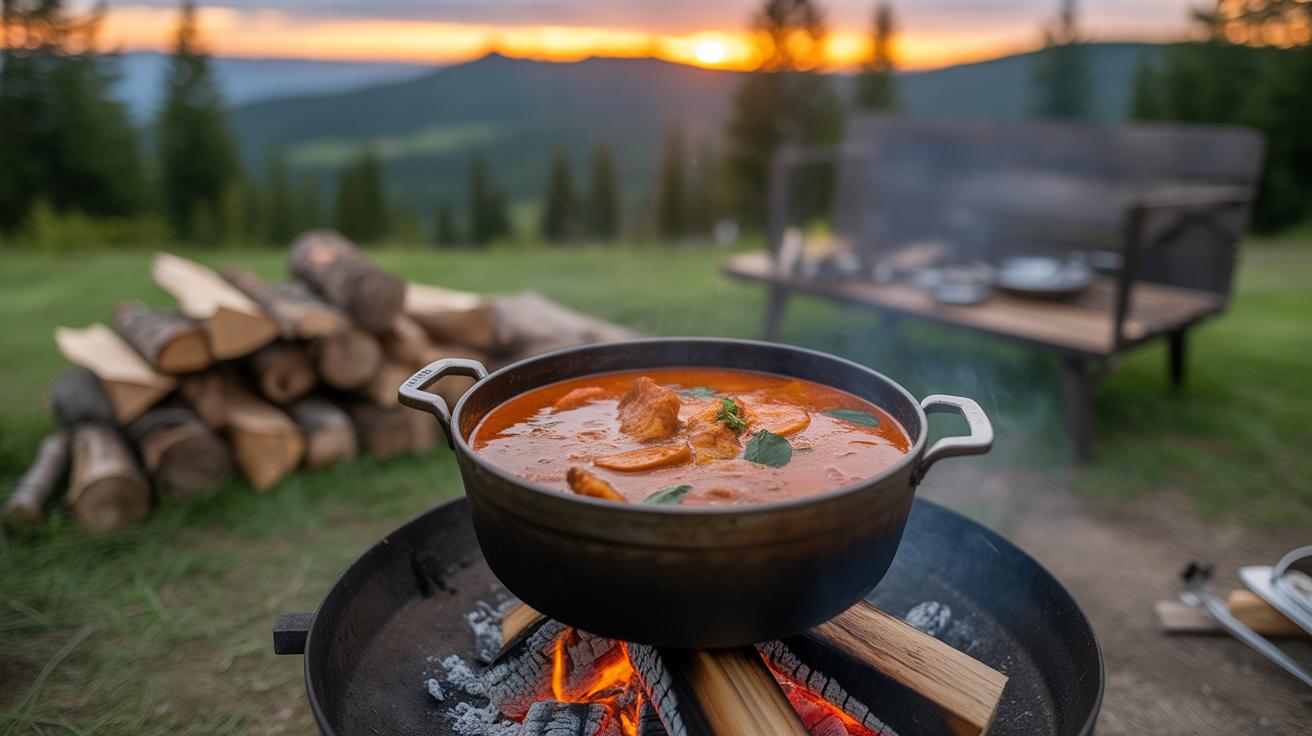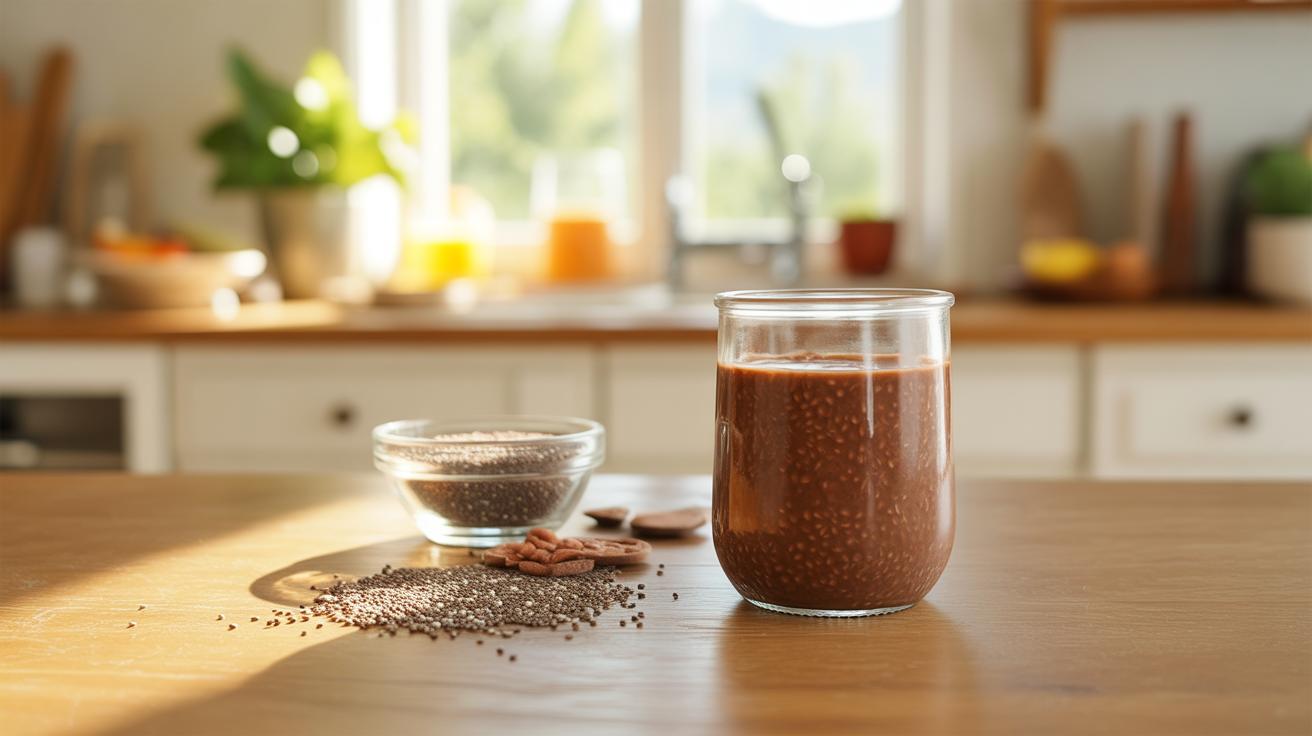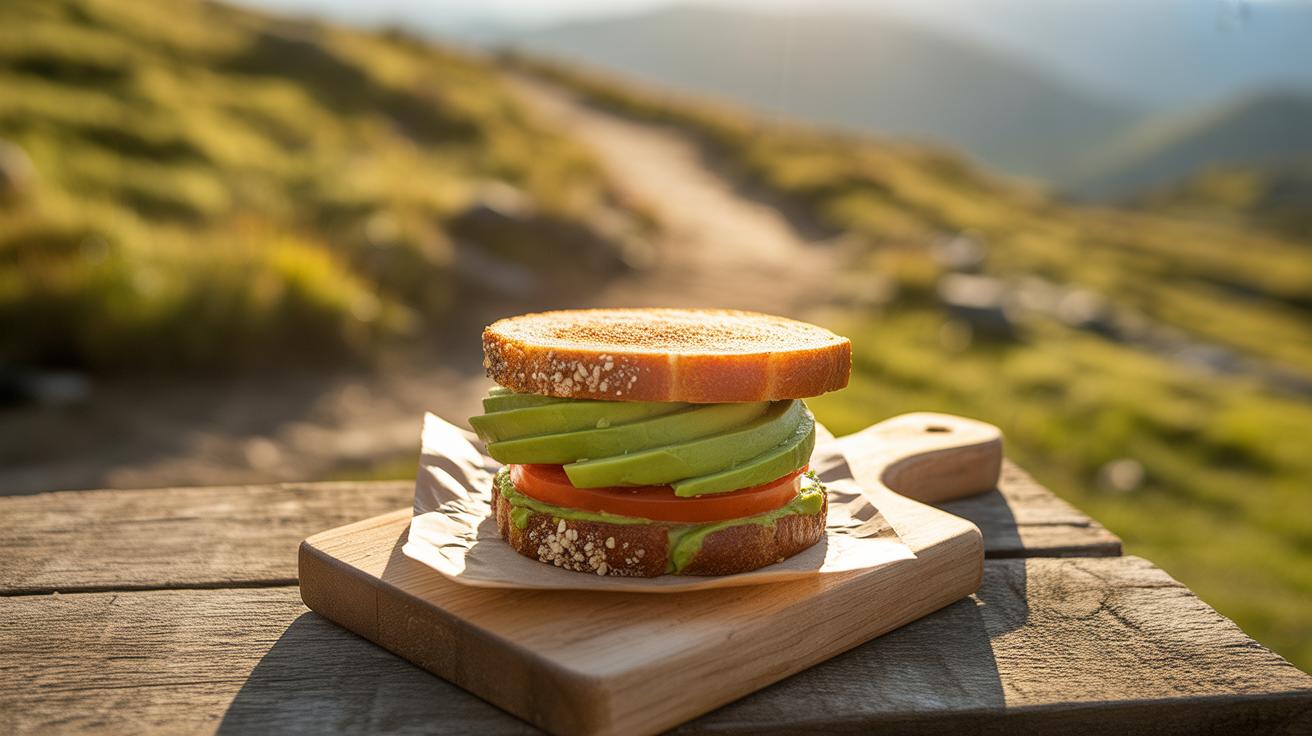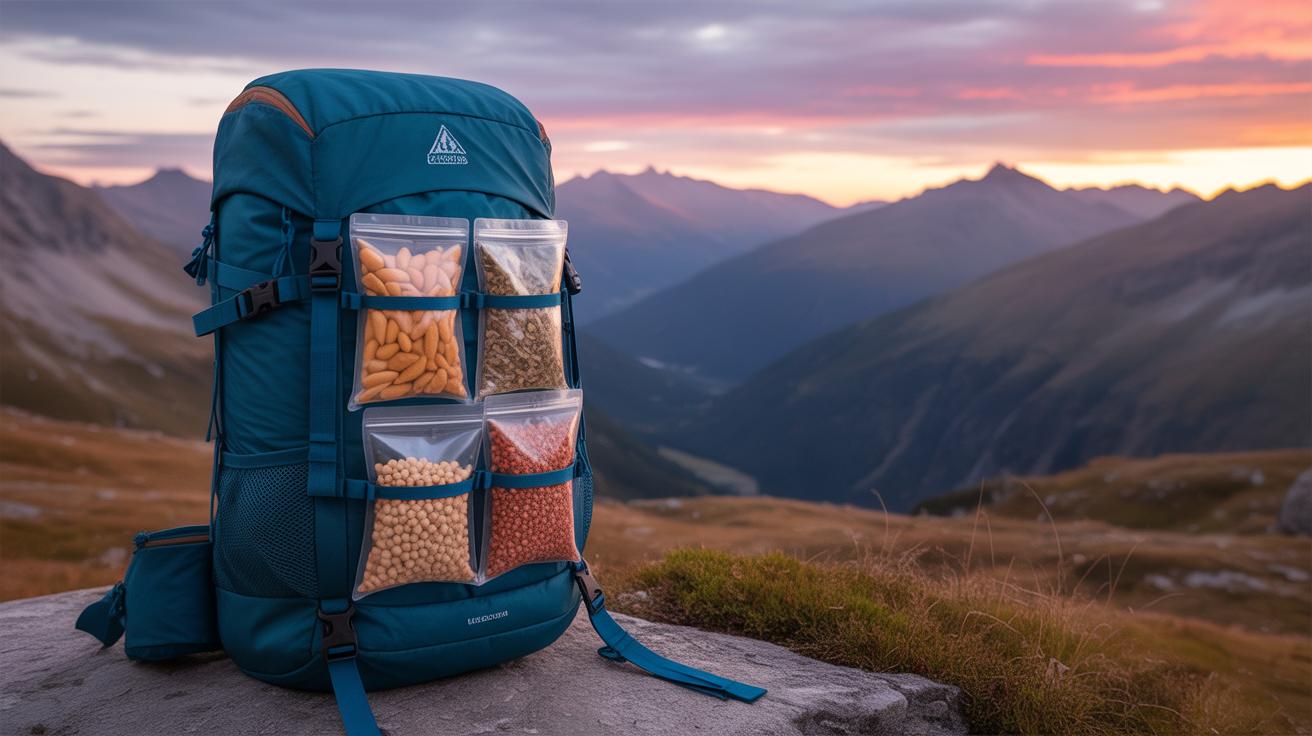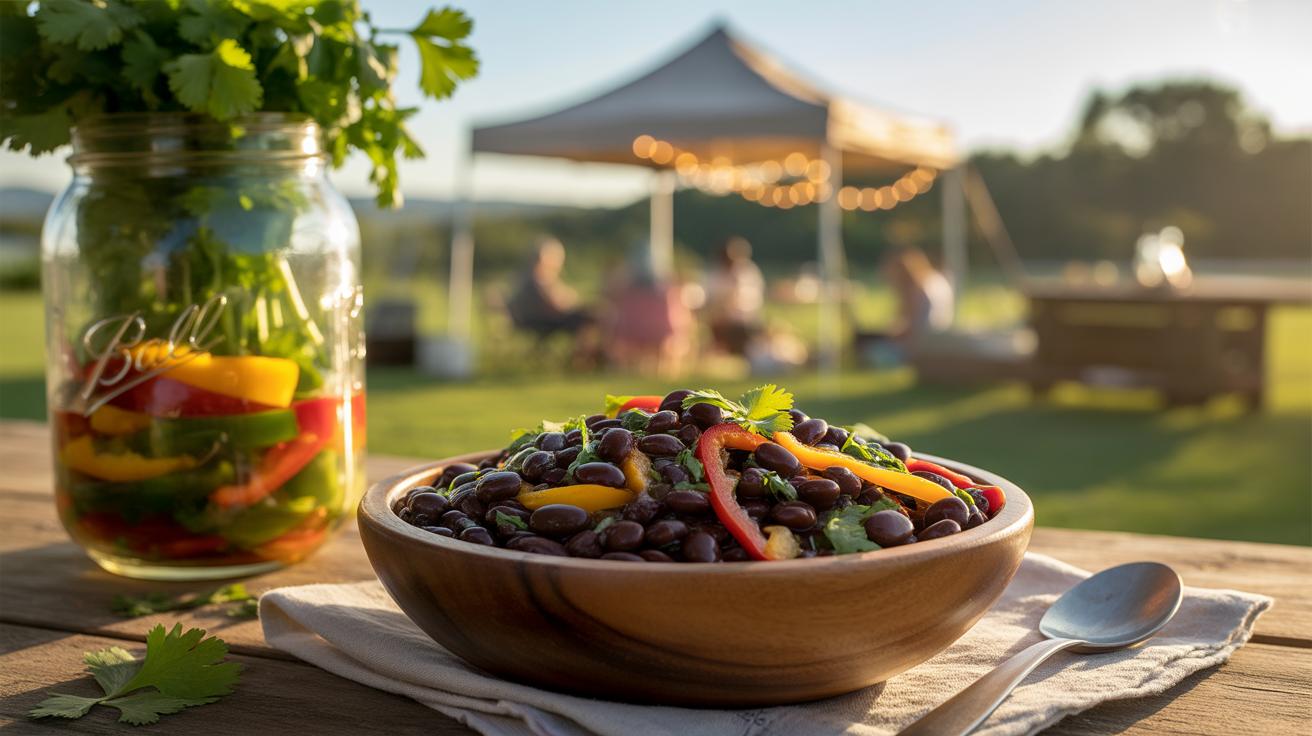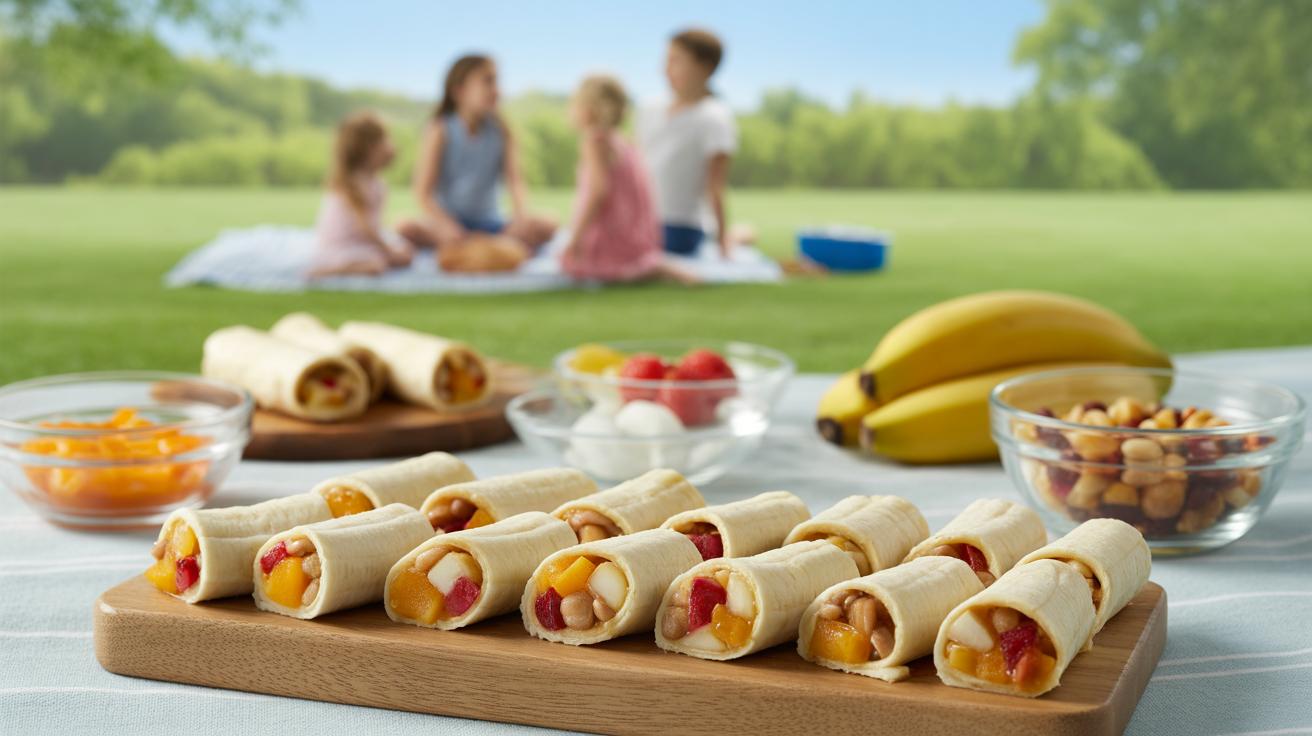Introduction
When you’re out camping, your body needs fuel to keep up with all the exploring and activities. Eating the right snacks can make a big difference in your energy levels and enjoyment. Energizing camping snacks are easy to carry and give you long-lasting energy so you can focus on your adventure.
This article will help you find the best snacks to bring on your camping trips. You will learn about different snack options that are healthy and practical. We will also share ideas on how to pack and choose snacks so you can have a great outdoor experience without feeling hungry or tired.
Why Energy Snacks Matter On Camping Trips
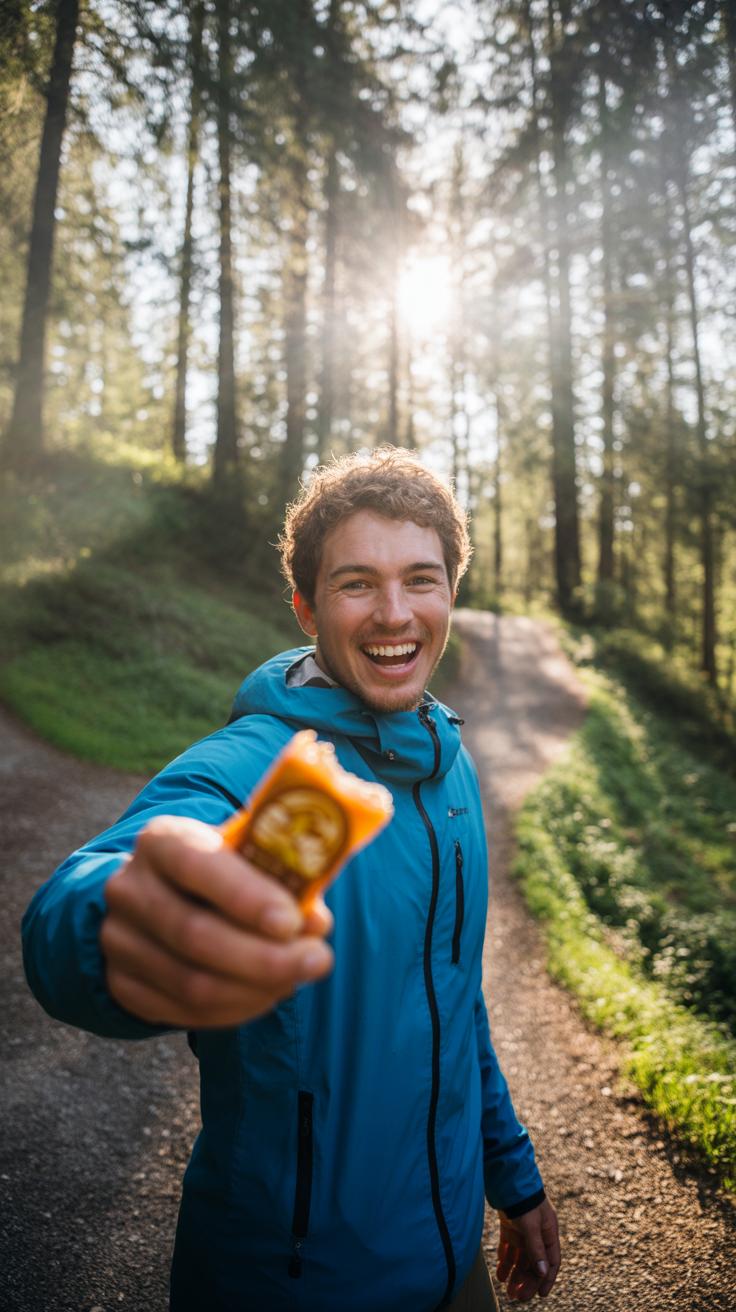
When you’re out camping, the activities—whether hiking, gathering firewood, or setting up your tent—demand more from your body than just sitting around. You burn a lot of calories, often more than you realize. It’s easy to underestimate how hungry you’ll get. That’s why having energy snacks on hand isn’t just convenient; it’s kind of essential.
Snacks help you keep going by topping up your strength and stamina. Imagine you’re halfway up a trail and suddenly feel your energy dip. Reaching for a quick snack can make a noticeable difference. I’ve often found that without anything to nibble on, the entire day feels heavier. Snacks stop those energy slumps that slow you down or make you irritable.
Outdoors, your body is working extra hard. Your muscles need fuel, your brain needs steady energy too, and snacks help provide that in small, consistent bursts. When you eat right, you keep your energy steady and your spirits up—even when the trail gets tougher than expected.
How Your Body Uses Energy Outdoors
Think of your body like a car engine. Instead of gas, it runs on calories you get from food. When you hike or bike, your muscles burn those calories to keep moving. The more intense the activity, the more calories you need. It’s simple: more effort, more fuel.
Energy snacks offer a quick way to refuel. They break down into sugars and other nutrients your body can use right away, without needing to digest a full meal. That’s handy when you’re on the go and can’t just stop for an hour to eat. For example, eating trail mix or an energy bar provides a mix of carbohydrates, fats, and proteins that fuel your muscles and help avoid that sluggish feeling.
When your body receives these calories steadily, you stay stronger longer. Without snacks, your energy dips, and even walking feels like a chore.
Signs You May Need More Energy
Knowing when your body needs more energy isn’t always obvious, but there are some clues to watch out for. Maybe you start feeling tired quicker than usual, or your legs feel weak on flat ground. Sometimes you just feel irritable, or your focus slips. These might be signs you need to eat something.
Other signals include sudden dizziness, headaches, or even chills—your body reacting to low energy reserves. When outdoors, it’s good practice to listen closely to these signs. Don’t wait until you’re completely spent before grabbing a snack.
I’ve noticed on my trips that once I start feeling “off,” it’s harder to get back on track. Pausing early for a small bite usually helps me bounce back faster—and it can be the difference between enjoying your hike and calling it quits too soon.
Best Types Of Camping Snacks For Energy
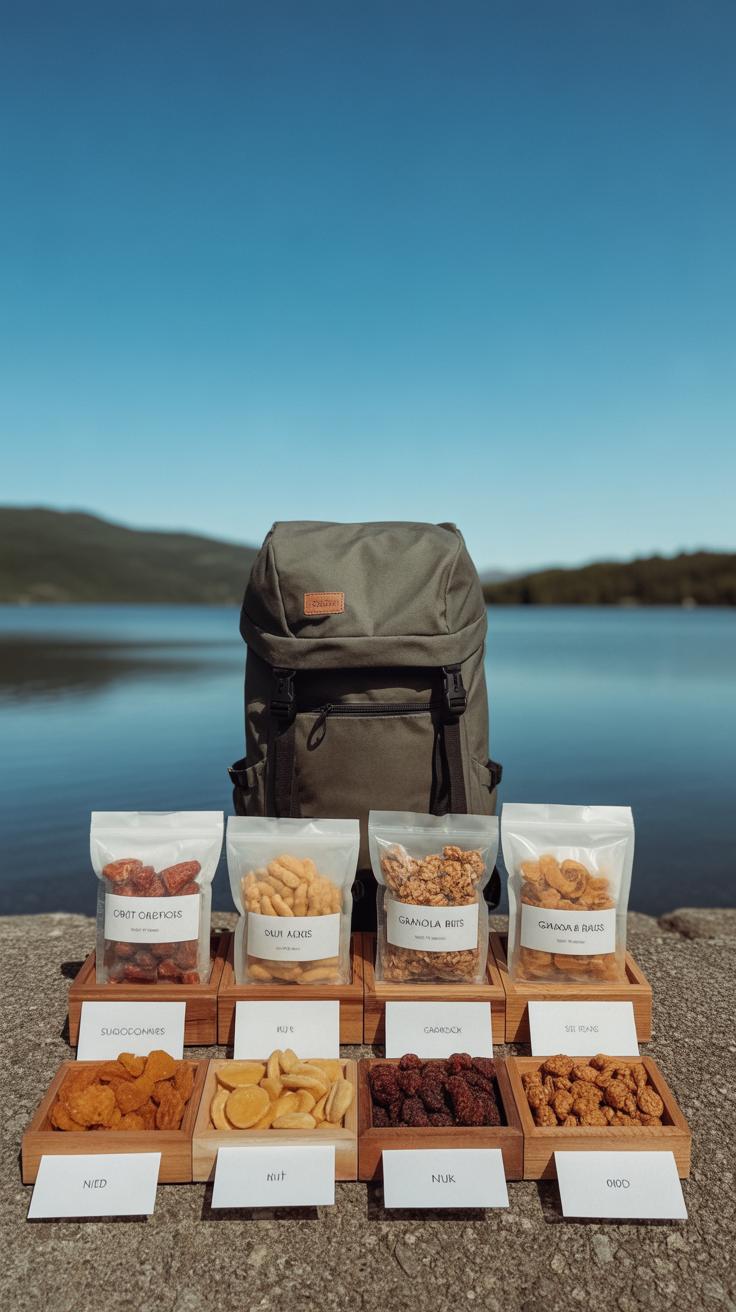
Nuts, seeds, dried fruits, and energy bars often top the list when it comes to camping snacks that keep you energized. These options pack a punch because they’re easy to carry and don’t spoil quickly. Nuts like almonds or walnuts offer healthy fats and protein, which help sustain your energy once you’ve started burning through calories on a hike or around the campsite. Seeds, especially pumpkin or sunflower, add variety and crunch, along with essential nutrients.
Dried fruits such as raisins, apricots, or mango provide concentrated sugars that are absorbed faster by your body—great when you need a quick boost. Energy bars combine these elements in one compact form, making them super convenient. Though, I find some bars a bit too dense or sweet sometimes, so choosing ones with a balance of ingredients matters.
Why these? Because they balance convenience with nutrition. You don’t want to carry something that feels like a chore to eat or makes you crash later. Plus, they give you enough fuel to stay focused without weighing your pack down. Ever noticed how fresh fruit gets squished in your bag? That’s why dried fruits and nuts are so popular.
High-Carb Snacks For Quick Energy
Carbohydrates are your body’s first choice for fast energy, especially during active periods. Think of carbs as quick fuel—your muscles can use them immediately to keep going when you’re climbing or walking long trails. Snacks like granola bars, fruit snacks, and trail mix with dried fruits provide these carbs efficiently.
Granola bars are kind of hit or miss. Some are loaded with sugar, which might cause a short energy spike, then a dip. Still, a bar packed with oats and natural sweeteners can really help push through mid-hike fatigue. Fruit snacks, although sometimes seen as just sugary treats, deliver simple carbs that your body rapidly absorbs.
Trail mix strikes a balance by pairing dried fruit with nuts or seeds, so you get carbs alongside fats and protein. That mix slows down the energy release, so you’re not jittery and then drained too quickly. Have you ever noticed how you often crave a bit of sweetness after heavy exertion? Carbs are likely the reason.
Protein and Fat Snacks For Lasting Energy
Snacks rich in protein and fats, like nuts and seeds, help to keep your energy levels more stable. They don’t deliver a quick burst like carbs, but they do provide slow-burning fuel, which means you feel satisfied longer and don’t get hungry again as fast. This is especially useful on days when you’re out for hours and don’t want to stop frequently.
Protein supports muscle repair and recovery, which is probably why I always pack some almonds or peanuts. Fats are calorie-dense, so a small handful can sustain you for a while. It’s interesting—sometimes, when I rely too much on carb-heavy snacks, I feel hungry again soon after, but with nuts and seeds, I can push through a bit longer without that gnawing feeling.
Including these snacks helps avoid energy crashes. But I guess it’s a matter of personal preference too. Some people don’t find fat-heavy snacks appealing on the trail. Still, they’re worth considering because your body does need consistent fuel—not just quick bursts —to manage the physical demands of camping and hiking.
How To Pack Snacks For Convenience
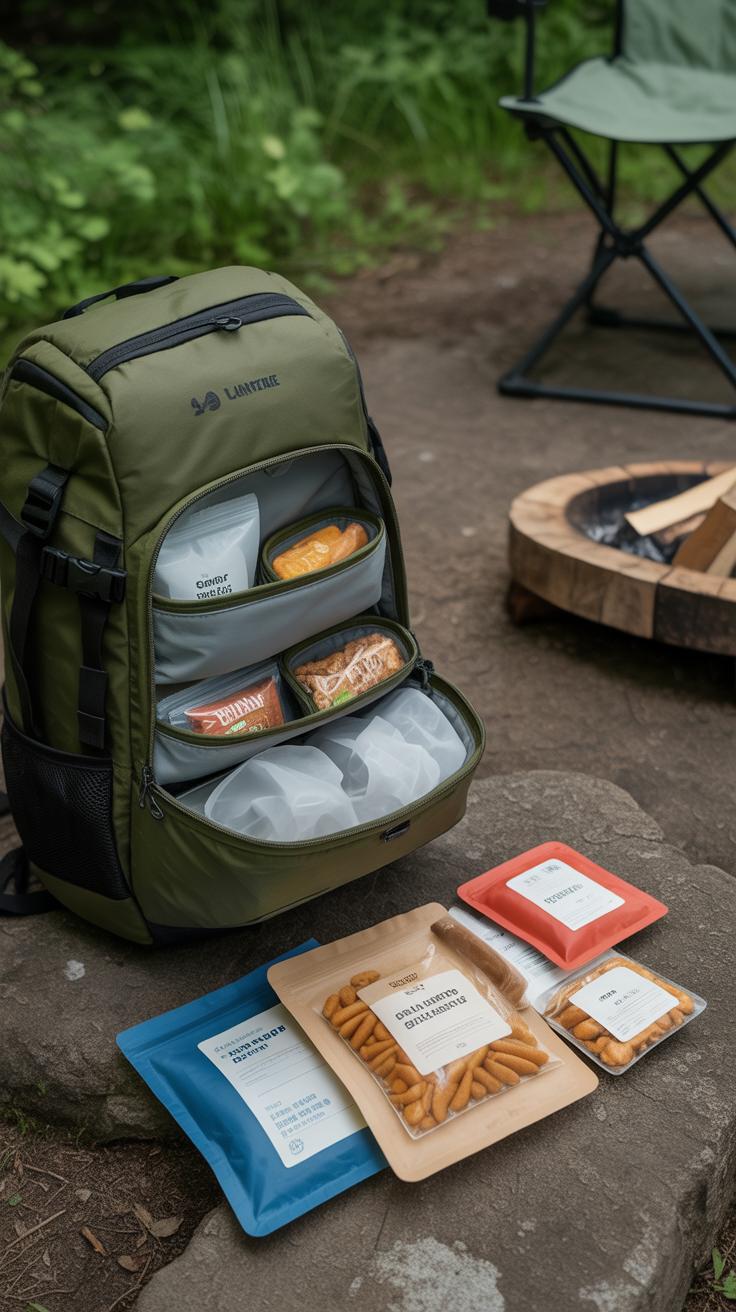
Packing snacks for a camping trip isn’t just about what you bring, but how you carry it. Easy-to-carry, non-perishable snacks that won’t make a mess can make all the difference when you’re out on the trail or sitting by the fire. Imagine trying to eat a sticky, crumbling snack with gloves on or dealing with disappointing, soggy food after a day’s hike—it’s frustrating, and honestly, it can slow you down.
Think about packaging. Small containers or resealable bags are a game-changer. They keep your snacks fresh and easy to grab without fuss. I tend to fill little plastic tubs or silicone bags with portions of nuts or dried fruit. It cuts down on waste and you don’t end up digging through a giant bag every time you want a bite.
Organizing snacks in your pack can save time and energy. Grouping snacks by type and storing them in outer pockets or top compartments lets you reach for exactly what you want without unpacking everything. The fewer steps to snack, the better.
Using Small Containers And Bags
Using small containers isn’t just about portion control—it’s also about convenience. Containers with tight lids avoid spills, but resealable bags work well too, especially if you want to squeeze them into tight spaces. I’ve found that clear bags make it easier to spot what you need without having to open each one.
Another trick is to label bags or containers, maybe with a quick note like “morning boost” or “trail mix.” This little step stops the mindless grabbing of snacks and helps you pace what you eat throughout the day.
Balancing Weight And Space In Your Backpack
Balancing snack weight and space is tricky. You want enough food to stay energized but not so much it weighs you down. A good method is to plan your snack intake by activity length and intensity, then divide the total amount into small, manageable portions.
Place heavier snacks closer to your back for better balance and lighter ones toward the outside. Sometimes, swapping some calories for more compact options like energy bars instead of bulky fruit can free up space. Still, variety matters—you might carry a bit more weight just because you want a change from nuts all day.
Have you tried packing snacks solely for lightness? It can leave you wishing for something more satisfying later. It’s a bit of a juggling act, but with practice, you figure out what works best for you and your trip’s rhythm.
DIY Trail Mix Recipes For Personalized Energy
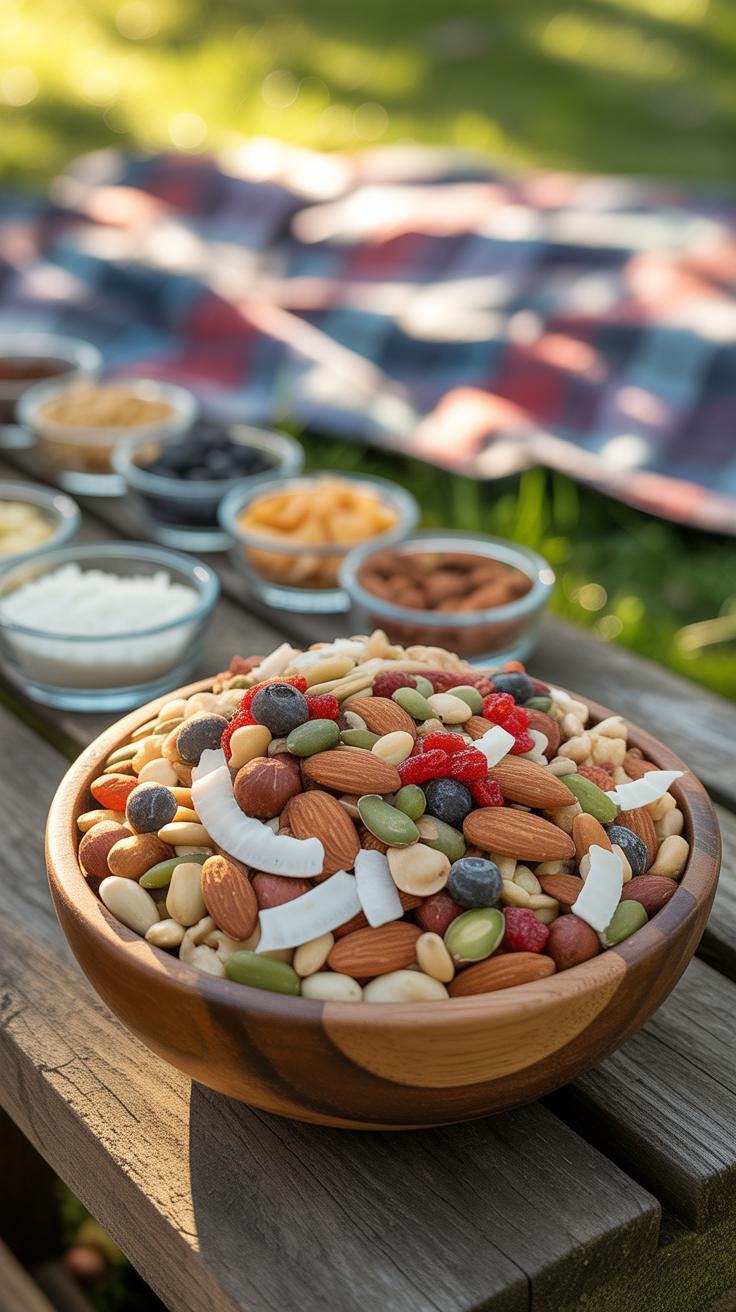
Making your own trail mix can be surprisingly simple and quite satisfying. Start with a base of nuts, seeds, and dried fruits – that’s the heart of any good mix. For example, take almonds for a crunchy, protein-rich bite, raisins to add some natural sweetness and quick carbs, and sunflower seeds for a dose of healthy fats and minerals. These ingredients fuel your body steadily, which is great while camping when your energy can dip unexpectedly.
Try mixing a cup of each: almonds, raisins, and sunflower seeds. Then toss in a handful of pumpkin seeds or dried cranberries for variety. If you want a bit of something extra, sprinkle in some dark chocolate chips or coconut flakes. Chocolate brings a quick energy boost, while coconut adds a subtle tropical twist and healthy fats.
What’s great about making your trail mix is you can tweak it however you like. If you need more protein, consider adding roasted chickpeas or a few peanut butter chips. Trying to keep sugar low? Dial back on dried fruits and add more nuts or even unsweetened coconut. Those with nut allergies? Seeds like pepitas and sunflower seeds work well to keep it crunchy.
Honestly, I’ve found it fun to experiment with different combos—sometimes simple is best, and sometimes I’m tempted to get adventurous. You might find your perfect mix doesn’t follow any “rules” but just feels right for you. After all, that’s the point: snacks that keep you going the way you need.
Quick Snacks To Eat On The Go
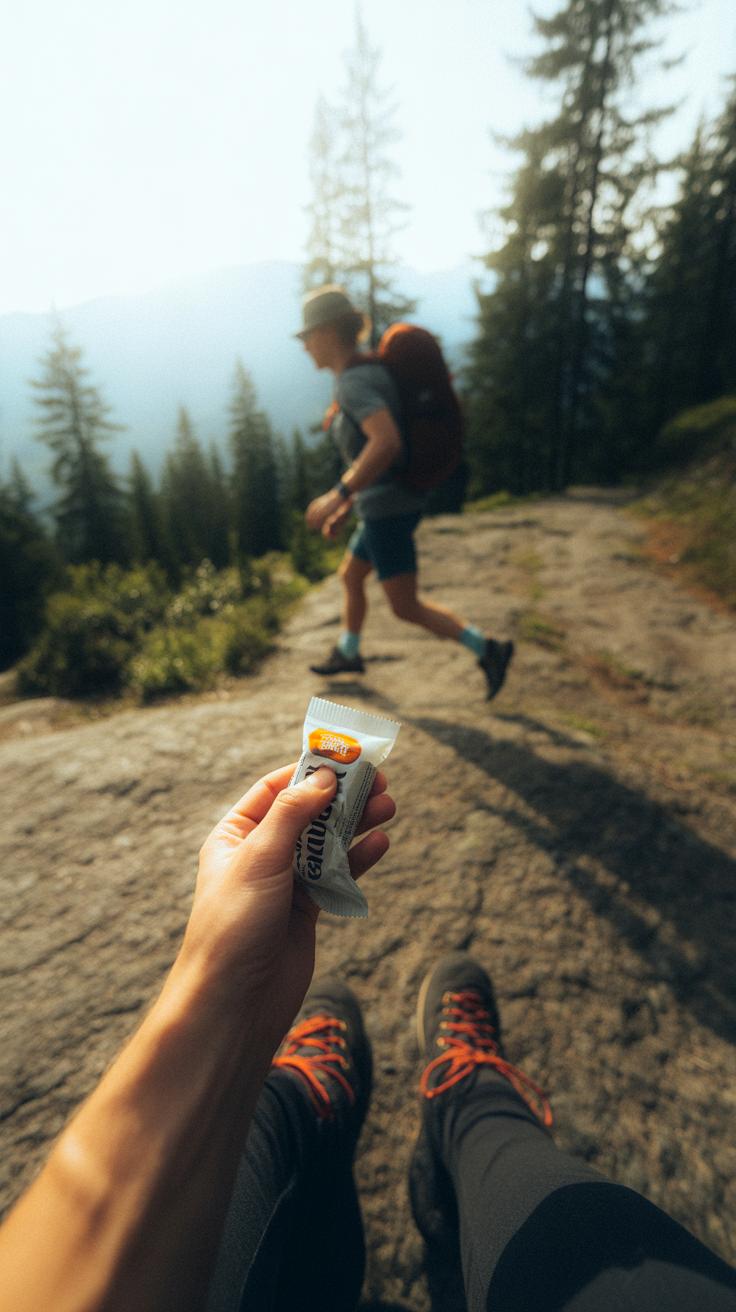
When you’re out hiking or just roaming around a campground, you want snacks that don’t slow you down. Granola bars often come to mind—they’re compact, don’t crumble easily, and pack a decent punch of energy. But they’re not the only game in town. Fruit leather, for example, can be surprisingly satisfying and doesn’t create a mess. Nut butter packets are another favorite of mine. Those little squeezable pouches fit anywhere and deliver a good dose of protein and fat to keep you going.
Think about what you’d reach for when you only have a moment to grab a bite. Chances are, it’s something quick and simple, right? High-fiber or protein-rich snacks tend to stick around longer in your stomach, which is handy when you’re not sure when you’ll stop next for a meal.
Choosing Portable Snacks
Portability can make or break your snack choice. There’s no point in carrying snacks that require plates or utensils—or worse, attract a mess that ruins your gear. You want items that slide easily into pockets or small bags so you can break them out without sorting through everything. Think slim, individually wrapped treats or items in small resealable packs.
Some solid choices include:
- Mini nut packs
- Beef jerky strips (if you eat meat)
- Seed mixes
- Dried fruit pieces
These snacks rarely take up much room and usually don’t make you pause long to unwrap. You’ve got to admit, carrying snacks that shift around or spill all over is just annoying—and maybe it ruins your mood.
Staying Hydrated Along With Snacking
Snacking isn’t just about calories. Water plays a crucial part when you want sustained energy. Think about this: dry or salty snacks can make you thirsty, and if you don’t drink enough, your energy dips faster than you’d expect. I’ve learned the hard way that balancing snacks with steady water intake is key.
Pack a refillable water bottle and sip regularly. Pairing your snacks, like salty nuts or chewy fruit leather, with water can keep your body in a better rhythm. This combo helps digestion and avoids that sluggish feeling you get when dehydration creeps in.
So next time you grab your snacks, ask yourself—do I have something to drink too? Don’t overlook water; it’s sort of the underrated part of keeping your momentum going outdoors.
Healthy Snacks Vs Sugary Treats
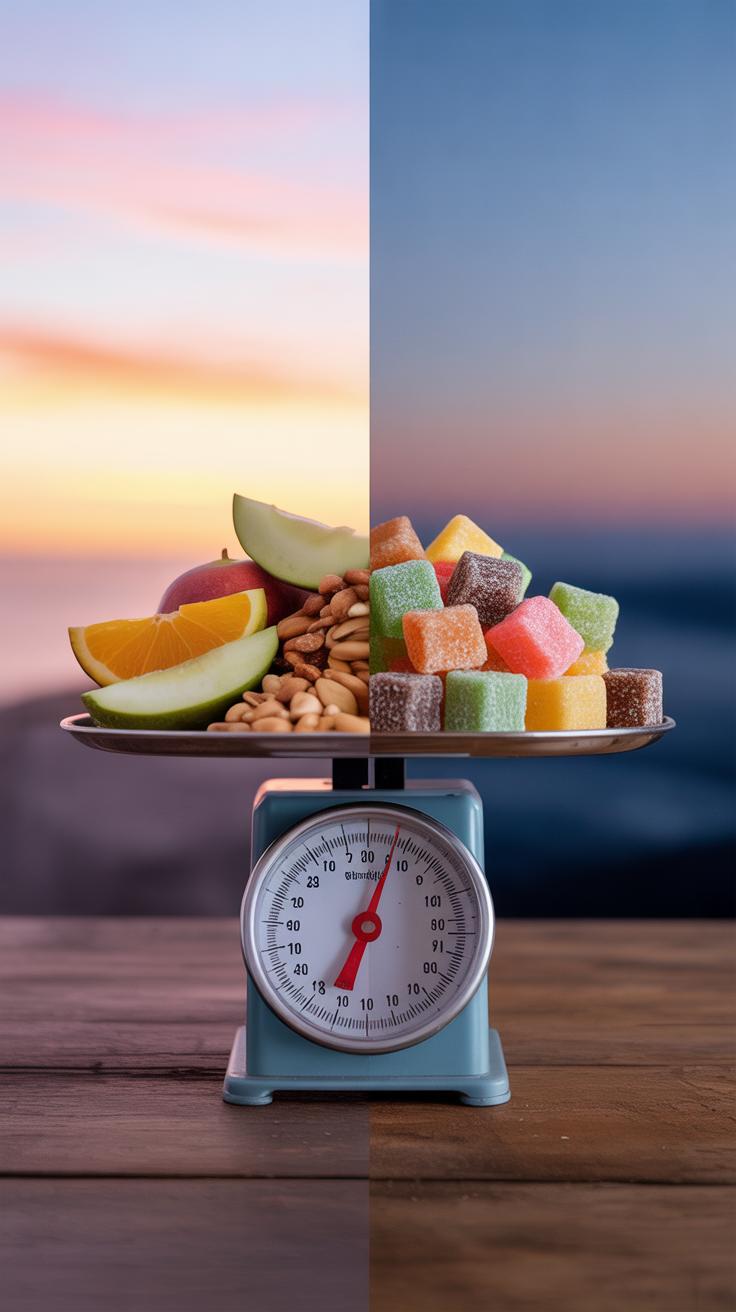
Benefits of Natural Ingredients
When you’re out camping, your body needs real fuel, not just empty calories. Whole nuts, fruits, and seeds provide steady energy without the rush. Think about almonds or walnuts—they’re packed with protein and healthy fats that help keep you feeling full longer. Dried fruit offers natural sweetness alongside fiber, which slows digestion and sustains your energy. Seeds like pumpkin or sunflower add minerals and texture without overloading you with sugar or artificial stuff.
Compared to candies or processed snacks, natural options tend to have fewer additives and less salt. This means fewer cravings and less chance of feeling sluggish. I’ve noticed when I reach for trail mix instead of candy bars, I get less brain fog and more consistent stamina, even on tougher hikes or longer days outdoors. It’s not that sugary treats are useless but, honestly, they rarely do what you hope for beyond a quick pick-me-up.
How Sugar Affects Your Energy Outdoors
Sugar can look like a quick fix—one moment you feel a surge of alertness, the next, a crash hits hard. That sudden dip happens because the body releases insulin to handle all that glucose at once, which can leave you feeling drained. Outdoors, where you need sustained energy, this boom-and-bust cycle can slow you down.
Also, sugar’s temporary lift might trick you into pushing harder than you should early on. Then, when fatigue sets in faster, you might question why you’re so tired despite “eating enough.” I’ve been there, grabbing chocolates during a break only to want to lie down fifteen minutes later. Choosing snacks with natural sugars—paired with fats or protein—helps avoid these swings. It’s not a straight line, though; some days sugar hits differently, but overall, natural ingredients tend to keep your energy more reliable.
Snacks For Different Camping Activities
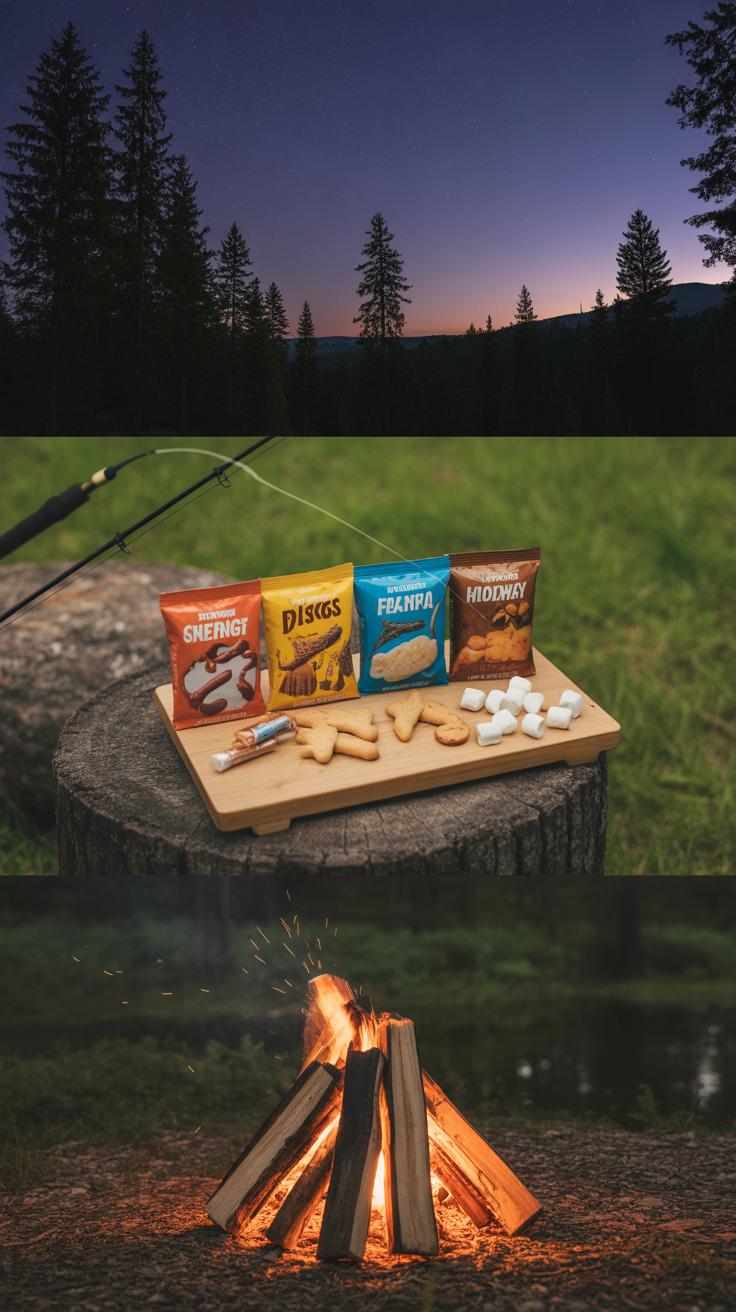
Different camping activities call for different snacks. It’s not just about what tastes good—it’s about what your body needs at that moment. When you’re out hiking or biking, your energy demand spikes, so snacks have to keep pace. On the other hand, when you’re fishing or simply relaxing around the campfire, your body isn’t burning as many calories. In those moments, maybe the snack is more about enjoyment or a quick boost rather than a full refuel.
Think about hiking—your legs are working hard, your heart’s pumping faster. You’re burning fuel fast, so calorie-dense snacks make the most sense. Jerky, nuts, or trail mix can cram in a lot of energy without weighing you down. Sometimes, I find myself grabbing something easy to eat with gloves off, like energy bars, so I don’t lose time fumbling around.
Fishing is a slower pace. You’re waiting for the fish, so you don’t need as much fuel, but something satisfying helps pass the time. Fruit, cheese, or even a small sandwich can feel more like a treat, calming and tasty without being heavy.
And then there’s the campfire, after everything’s done. You’re sitting, maybe chatting or reading a book. That’s when it’s okay—maybe even preferable—to have lighter, more flavorful snacks. Think crackers with spreads, or small bites that satisfy cravings without pushing energy needs too much.
Energy Needs For Hiking And Biking
Hiking and biking make your body burn calories fast—and that means you’ll want snacks that pack a punch. Quick energy matters, but so does lasting fuel. Fats and proteins stick around longer in your system, while carbs give immediate bursts. I usually carry a mix: nuts for slow burn, dried fruit for quick sugar, and sometimes a bit of dark chocolate. It’s not just about grabbing any snack—it’s about what sticks with you through miles and climbs.
Energy bars are popular but can feel a bit meh if you have them every time. It’s weird how calories don’t always feel the same depending on snack form. Even a small handful of peanut butter pretzels can feel more satisfying to me than a bland bar. And you really notice if you underfuel; energy crashes hit hard on steep trails.
Light Snacks For Relaxing Times
When activity slows down, calorie needs ease off. That’s when lighter snacks come in. You’re probably not out of energy—you just want something pleasant to munch as you unwind. This is your chance to enjoy flavors and textures without worrying about packing in calories.
Cheese sticks, sliced veggies with hummus, or even popcorn work nicely—nothing heavy or greasy, but still interesting. Fruit or even a small handful of seeds can feel like a treat without tipping the scales. Sometimes I bring herbal tea or flavored water along, which helps why snacks seem less urgent, more about comfort.
I guess it’s easy to overlook this because we think snacks have only one job: energy. But sometimes they’re about social time, or ritual. That subtle difference changes what you want to pack and eat during those slow campfire moments.
Planning Your Snack Supply For MultiDay Trips
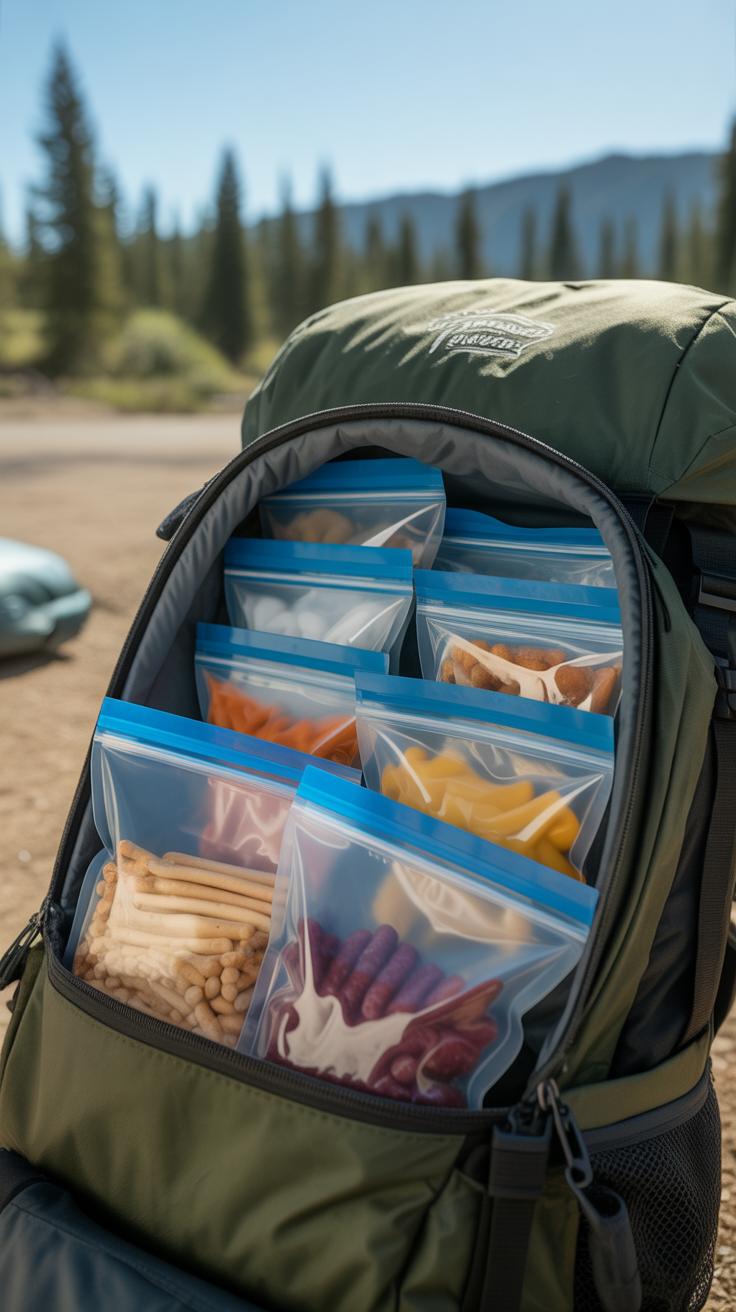
Figuring out how many snacks to bring on a multi-day trip isn’t as simple as just packing a bit extra. You need to think about how much energy you’re burning each day, which can vary widely depending on your activities. If you’re hiking long distances, your body will demand more fuel than if you’re mostly relaxing or fishing. A rough estimate is to plan for about 200 to 300 calories per hour of activity, but that can shift. Personally, I’ve found my snack intake swings a lot depending on the day’s exertion—and hunger’s tricky, sometimes sneaking up unexpectedly.
Try this: calculate your daily calorie burn from the planned activities, then split that into multiple small snack portions spread throughout the day. For example:
- A 6-hour hiking day might need roughly 1,200 to 1,800 calories just from snacks.
- Mix different types: salty, sweet, crunchy, and chewy to keep things interesting.
- Keep some quick energy snacks easily accessible, especially for moments when you feel a drop in energy.
When it comes to freshness, storage really makes a difference. I once packed fresh fruit for a three-day trip. It barely lasted the second day without spoilage. What worked better afterward was vacuum-sealed dried fruit and nuts, wrapped tightly to avoid moisture. Using airtight containers or resealable bags helps a lot too. If you’re camping somewhere cold, storing snacks in a cooler spot outside your tent can extend their shelf life. But if it’s warm, think about snacks that don’t depend on refrigeration.
Also, layering your snacks according to when you plan to eat them can be handy—put the items for day one at the top, so you don’t keep opening the whole stash and exposing everything to air. Variety and storage might seem minor, but they’re what keep your snacks really enjoyable over several days. How often have you ended up eating the same thing day after day, just because you didn’t pack enough options? Mixing it up matters more than you might expect.
Conclusions
Choosing the right camping snacks keeps you energized and ready for your adventure. Look for snacks that are easy to carry and provide a good mix of carbs, protein, and fats. Snacks like trail mix, energy bars, and dried fruit fit well into any backpack and can be eaten anytime.
Planning your snacks ahead will help prevent hunger and keep your spirits high. Experiment with different snacks to find what works best for your taste and activity level. With the right snacks, you can enjoy every moment outside and feel great all day long.


